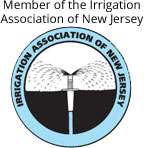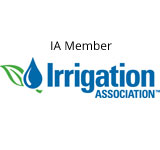So what is the difference between rotor sprinkler heads and spray sprinkler heads, other than the obvious fact that one turns and the other does not?
Well, rotors do turn and also cover a larger area. Since they rotate, they have a lower precipitation rate than sprays which means they apply water slower than a spray. Generally a rotor will take three times (3X) as long to water the same square footage as a spray head. So basically it would take 45 minutes to put down the same amount of water that a spray head would put out in 15 minutes. Rotors are great for larger lawn areas.
With that being said, spray heads have a higher precipitation rate than rotors. This is mainly because they stay fixed and do not rotate or move. However they generally do not cover as big of an area as rotor heads do. Sprays are great for smaller lawn areas and shrub/flower beds.
Rotors will put out water an average of thirty feet (30ft) which can vary a few feet either way depending on nozzle type and system pressure. Spray heads throw water a range from four feet (4ft) to fifteen feet (15ft). There are nozzles that throw eighteen feet (18ft) but are not used as often as the others. The most common nozzle sizes used are probably 10′, 12′, and 15′. The footage refers to the radius of the throw. So a 15′ full circle would actually project water a 30 foot diameter.
Rotors are usually adjustable from 0 to 360 degrees. Sprays have nozzles that come in fixed patterns such as 1/4 (90 degree), 1/2 circle (180 degree), 3/4 circle (270 degree), and full circle (360 degree). There are also nozzles that are adjustable from 0 to 360 degrees which are good for certain situations such as on driveways along curves. However I don’t really care too much for the adjustable pattern nozzles because they always seem to get clogged easily and their spray pattern is not as nice and neat as fixed patter nozzles.
Both spray heads and rotor sprinkler heads have their place. A properly and professionally designed irrigation system will normally have a combination of both (not on the same zone) to provide adequate, even water coverage.





